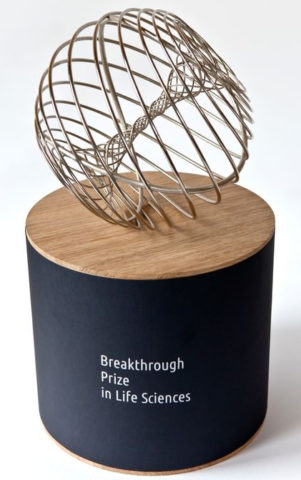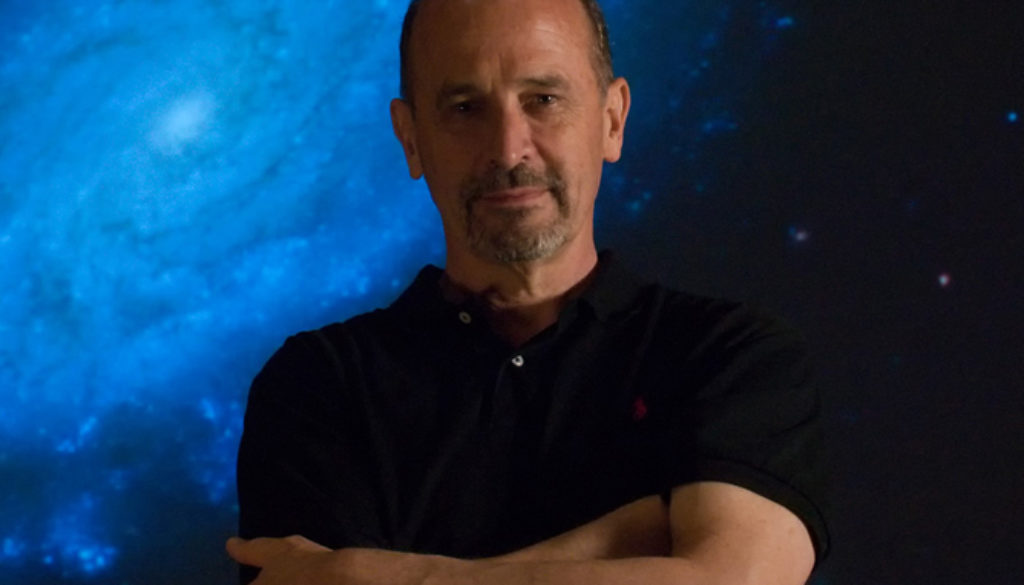Suntzeff Shares in $3M Breakthrough Prize in Fundamental Physics
Nicholas B. Suntzeff, university distinguished professor of physics and astronomy at Texas A&M University, has been named a co-recipient of the Breakthrough Prize in Fundamental Physics for his role in the 1998 discovery of the accelerated expansion of the universe.
The prestigious award, considered the world’s most lucrative academic prize at $3 million, recognizes major insights into the deepest questions of the universe. Suntzeff shared in the international honor along with 50 other scientists who are members of the two teams that simultaneously discovered the mysterious substance known as dark energy and, consequently, unexpected proof of the universe’s accelerating expansion.
Suntzeff co-founded one of those teams, the High-Z Supernova Search Team, along with Brian P. Schmidt, an astronomer at Australian National University. Schmidt was recognized at last night’s star-studded awards ceremony in California along with High-Z teammate and Johns Hopkins University astronomer Adam G. Riess and University of California, Berkeley astrophysicist Saul Perlmutter. Riess, who served as lead author on the High-Z team’s 1998 Astronomical Journal paper announcing the group’s ultimate discovery, was a Miller Fellow postdoctoral researcher at Berkeley at that time after earning his Ph.D. from Harvard in 1996, while Perlmutter headed up the competing team, the Supernova Cosmology Project.


The two teams were cited “for the most unexpected discovery that the expansion of the universe is accelerating, rather than slowing as had been long assumed.”
“This is very happy news for the HZT,” Suntzeff told his teammates in a congratulatory email last night. “With this award, everyone by name has been recognized as individuals in our discovery of the accelerated expansion of the universe. For me, this is so important because our discovery was possible because we were a team of equals that worked so well together. I am very proud of this award, but I am even more proud of our collaboration, which will always be the scientific achievement of a lifetime for me.”
Watch a YouTube clip of the presentation and remarks by Schmidt, Riess and Perlmutter:
The Breakthrough Prizes are sponsored by Yuri Milner, a Russian entrepreneur and philanthropist; Sergey Brin, co-founder of Google; Anne Wojcicki, the founder of the genetics company 23andMe; and Mark Zuckerberg, the founder of Facebook. The prizes, which also are awarded in life sciences and mathematics, are intended to celebrate scientists and to generate excitement about the pursuit of science as a career. Recipients of the awards each receive $3 million to support their future work.
“Scientists are not celebrities in the way I think they should be,” Milner told USA Today. “We recognize athletes and entertainers, but not scientists. I think that’s out of balance in terms of the contributions that people make versus the recognition they get.”
The second annual Breakthrough Prize ceremony, held Sunday (Nov. 9) in Silicon Valley, will be simulcast by the Discovery Channel and the Science Channel Saturday (Nov. 15) in the United States. In addition, UC Berkeley will offer live streaming of the Breakthrough Prize symposia Monday, Nov. 10, from 9 a.m. to 5 p.m. PDT.
Prior to co-founding the High-Z team, Suntzeff had co-founded a previous group, the Calan/Tololo Supernova Project, that pioneered the use of exploding stars to measure precise distances deep into the universe, ushering in the field of supernova cosmology. Specifically, they used the brightness from a specific type of supernova, Type Ia, to produce not only a precise calibration but also a precise measurement of the Hubble constant — a key finding that paved the way for both teams’ subsequent discovery honored as Science magazine’s “Scientific Breakthrough of the Year” for 1998 across all science disciplines and with the 2011 Nobel Prize in Physics, in addition to the 2007 Gruber Prize in Cosmology and the 2006 Shaw Prize.
Suntzeff joined the Texas A&M Department of Physics and Astronomy faculty in 2006 as director of the Texas A&M astronomy program and the inaugural holder of the Mitchell-Heep-Munnerlyn Chair in Observational Astronomy. A member of the George P. and Cynthia Woods Mitchell Institute for Fundamental Physics and Astronomy, he was appointed in 2013 as a University Distinguished Professor, the highest level of achievement for faculty recognized as pre-eminent authorities in their fields.
To learn more about Suntzeff and his research, go to Dr. Nicholas Suntzeff/.
# # # # # # # # # #
About Research at Texas A&M University: As one of the world’s leading research institutions, Texas A&M is in the vanguard in making significant contributions to the storehouse of knowledge, including that of science and technology. Research conducted at Texas A&M represents annual expenditures of more than $820 million. That research creates new knowledge that provides basic, fundamental and applied contributions resulting in many cases in economic benefits to the state, nation and world. To learn more, visit http://research.tamu.edu.
-aTm-
Contact: Shana K. Hutchins, (979) 862-1237 or shutchins@science.tamu.edu or Dr. Nicholas B. Suntzeff, (979) 229-9597 or nsuntzeff@tamu.edu
The post Suntzeff Shares in $3M Breakthrough Prize in Fundamental Physics appeared first on Texas A&M College of Science
